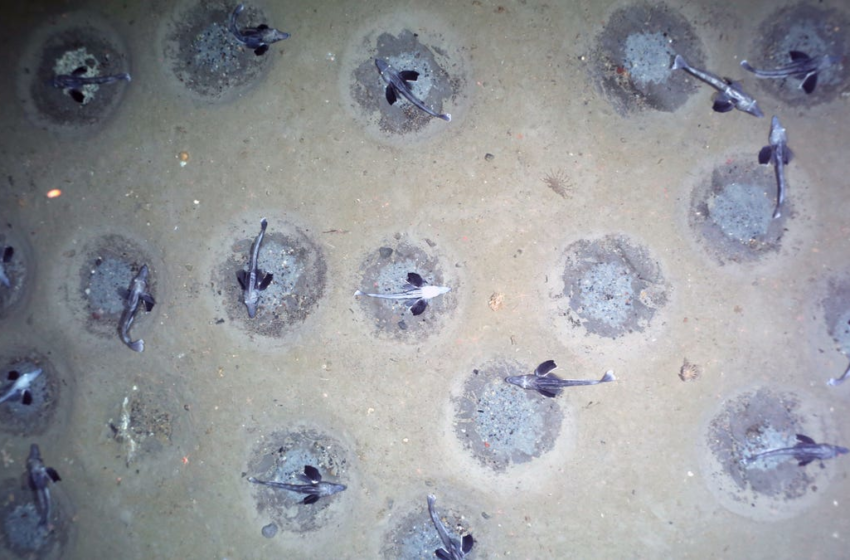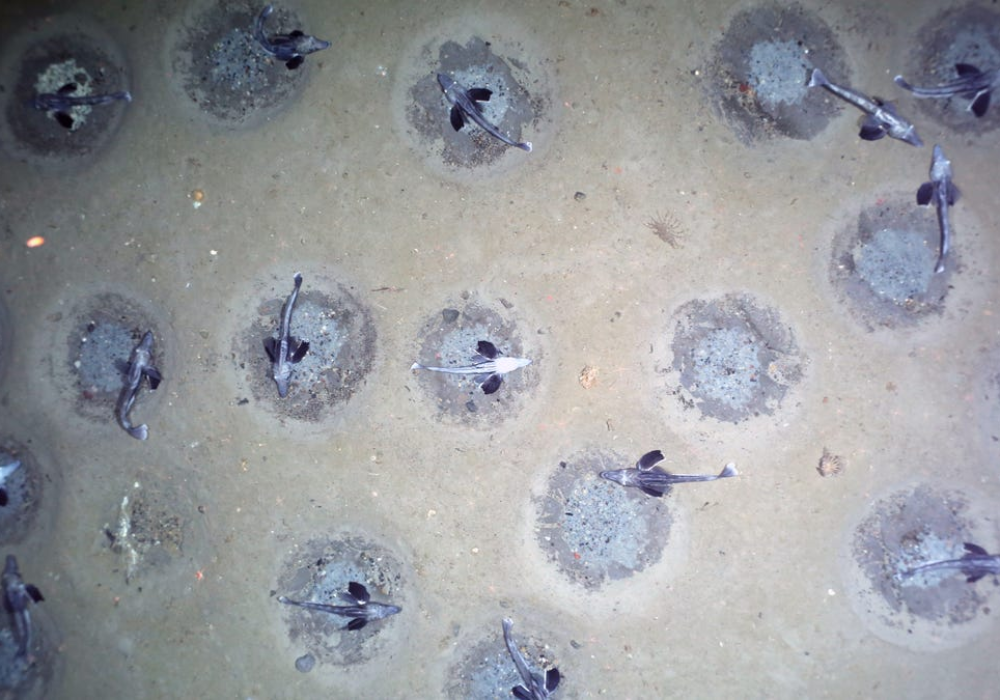
Deep-sea biologists were stunned to find the largest known fish breeding ground, a discovery made last year near Antarctica. Details of the incredible find were published today, with researchers describing a sprawling colony of millions of icefish on seafloor of the Southern Ocean.
The icefish (Neopagetopsis ionah) were spotted in February 2021 by a camera rig towed by the research ship Polarstern in the Antarctic Weddell Sea. An interdisciplinary group of scientists were there to study the movements of ocean carbon and potential impacts of climate change on the local ecosystem, among other goals. In the process, they came across a fish nest, and then another, and then another.
“The idea that such a huge breeding area of icefish in the Weddell Sea was previously undiscovered is totally fascinating,”said Autun Purser, a deep-sea biologist at the Alfred Wegener Helmholtz Centre for Polar and Marine Research, in an institute release. Previously, only a few clusters of nests or individual fish had been found in the area. This is akin to finding a rich vein of gold after years of negligible nuggets.
Each icefish nest is about 2.5 feet across, much larger than the fish themselves. The crew increased the ship’s cruising speed to scour a larger area, and, in total, they counted over 100,000 nests using sonar, some 16,000 of which were captured in photos and video. They believe the nesting ground’s total area is about 93 square miles (240 square kilometers) and estimate the true number of nests in the colony could be as high as 60 million. The research is published today in Current Biology.
Many of the fish nests were active—filled with thousands of eggs and generally guarded by an adult icefish—while others were abandoned. They also saw some dead fish in nests. Purser said that there’s good reason for fish to guard their clutch.
“We saw ray fish actually swim underneath the guarding fish to eat the eggs,” Purser said. “Additionally, it seems sea spiders sneak in and grab occasional eggs. Starfish and octopi also hang out near the nests, looking for the chance for a quick dinner. We presume the seals diving to the depths are eating the adult fish, rather than the eggs.”
The icefish discovery is similar to a previous finding by the same team: the bizarre, unexpected movements of deep-sea sponges along the seabed, as evidenced by spicule trails left by the animals. But the icefish have the sponges beat in the sheer scale of their operation, which is about four times the area of Manhattan.

Despite how long these icefish have gone undiscovered, they are under threat. “Baby icefish live just under the ice, feeding on algae, small animals, and hiding from predators,” Purser said. “If the ice melts due to global warming, this part of their lifecycle will be impacted.”
Purser added that, if this delicate balance is tampered with, the icefish would have to adjust. There could be a “different pattern in algae in the surface waters, and more detritus sinking in the water, potentially impacting on the nests—filling them up or making it harder for the fish to keep the eggs clear of sediments which may allow bacteria to attack the eggs, if they get partially smothered in material,” he said.
Antarctica is, of course, melting, and a proposal to make the Weddell Sea a marine protected area has been backed by the member states of the European Union, among other countries, since 2016.
Purser’s team plans to return to the sea in April to do sweeping scans of the seafloor slightly north of this vast fish habitat. Given the unexpected scale of the recently found breeding ground, they believe that looking at a larger area is likely to yield more exciting discoveries.
More: These ‘Immobile’ Sea Sponges Apparently Had Places to Go










